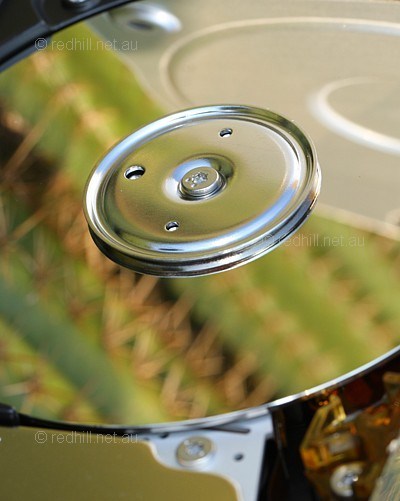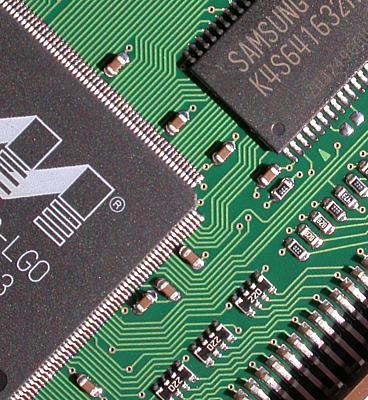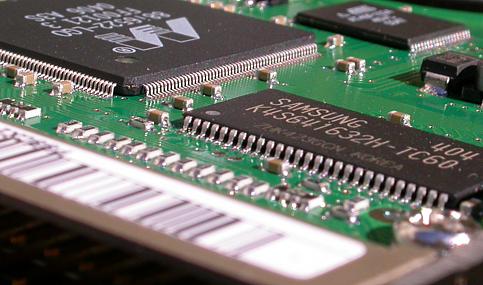
Maxtor 541DX (20GB, 2001).
Update your bookmark
This is the old site. You probably want the new site.
The new site has all the same information but adds more drives, updated text, and much better pictures of many models.
- Seagate Barracuda ATA IV
- Samsung Spinpoint V40
- Western Digital JB Series
- Samsung Spinpoint P40
- Samsung SpinPoint P80
- Samsung Spinpoint P120 new
This old version of the Red Hill guide hasn't been updated for about ten years. The new version can be found here.

2003 was the great divide year for hard drives. From that time on drives become very boring things indeed. Essentially, there were only two sorts of hard drive: (a) reduced warranty drives with questionable reliability, and (b) drives backed by a full three year warranty. Maxtor, Western Digital, Seagate, and IBM/Hitachi sold the former type, only Samsung retained enough confidence in its own products to stand by them for the full three years. Several of the other makers tried to muddy the waters by offering a full warranty on certain models, or allowing you to buy the normal cover that, up until October 1st 2002, you could expect as of right, but none of them were prepared to stand by their products as they used to.
This was no accident. Warranty service can cost a great deal of money — as IBM found out the hard way with the 75GXP disaster — and to be able to afford a three year warranty a drive maker either has to set aside a substantial proportion of its income, or else be very confident that the product will see out the distance.
Why did Samsung still provide a three year warranty when none of the other manufacturers dared to? Simply, because (as our own return figures clearly demonstrate) Samsung's drives were significantly more reliable. In all our years of experience with hard drives, we have never met as low a failure rate as the Spinpoints deliver.

Samsung SpinPoint P80
A typical Samsung drive. Quiet, performance near enough to the same as any other 7200 RPM model, as reliable as sunrise.
The P80 arrived mid-way through the year with no great fanfare. Rather unusually for a Samsung drive, it was available in a range of models: there were 3 basic flavours: 80, 120 and 160GB, all three available with standard ATA interfaces in 2MB and 8MB cache versions, and in SATA with 8MB. Samsung also listed a 60GB unit, but demand for that odd size was never strong and as far as we know it was not imported here. The most popular model by quite a margin was the SP0802N (2MB cache and 80GB).
The P80 has had an extraordinarily long market life: it was still accounting for the majority of Samsung's production as late as July 2005, and remains as popular as ever. It wasn't until April 2005 that a new 200GB model appeared to supplement it.
| Performance | Reliability | AAA | |
| Data rate | 741 Mbit/sec | Spin rate | 7200 RPM |
| Seek time | 8.9 ms | Buffer | 2MB or 8MB |
| Platter capacity | 80GB | Interface | ATA-100 |
| SP0802N | 80GB | 2 GMR heads | ***** |
| SP1203N & SP1213N | 120GB | 3 GMR heads | ***** |
| SP1614N | 160GB | 4 GMR heads | *** |
From time to time people ask when we are going to update the hard drive guide with new models. It's a good question. The answer, however, depends on the manufacturers more than us. We'll update this page when there is something interesting to put on it — and nothing of any particular note has happened in the hard drive industry for quite some time.
Beginning in 2005 the other manufacturers, one by one, have started offering reasonable length warranties again, but alone is not sufficient to win back lost sales. The whole warranty-slashing episode smacked of bad faith, particularly in the light of the uncomfortably high failure rates we experienced with both Seagate and Western Digital drives in the period leading up to it. Both companies had by this time abandoned their previous practice of (in general) supplying new drives as warranty replacements, and the failure rate of the refurbished drives we got instead was much to high to be acceptable — approaching 50%. In the end we just gave up on them and started just throwing faulty Caviar and U-Series drives in the bin because it wasn't worth the trouble of sending units off just to get a refurb that, as often as not, would only last a few weeks until it failed too.
We have no interest in taking chances with people's data, nor in buggerising about with on-again, off-again warranty schemes. In short, we haven't sold a non-Samsung drive for several years, and don't expect to unless Samsung produces its first dud model in a decade, or one of the other manufacturers comes up with something so good we have to look at it. If and when that happens, we will let you know.


